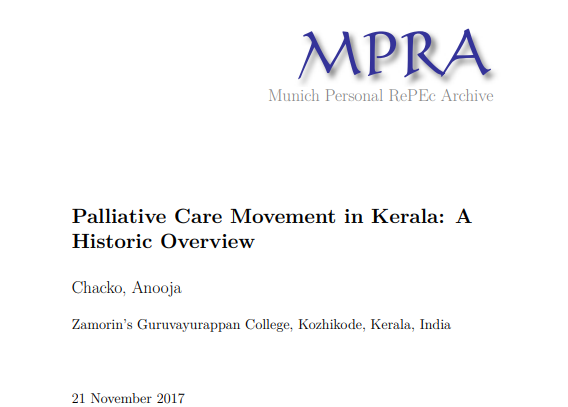Palliative Care in Kerala, India: A Model for Resource-Poor Settings
The growing need for palliative care globally is especially critical in resource-poor settings, where patients with advanced cancer, AIDS, and other chronic conditions often lack access to treatment. In Kerala, India, the Pain and Palliative Care Society (PPCS) developed a pioneering model for community-based palliative care. Beginning as a small outpatient service in Calicut in 1993, PPCS has expanded into a network of 33 clinics offering free care to patients with terminal illnesses. This model emphasizes community participation, family empowerment, and the use of local resources. Trained volunteers support patients through home care and outpatient services, ensuring holistic care that addresses physical, emotional, and social needs. By 2002, this network was treating approximately 6,000 new patients annually, covering about 25% of the need among newly diagnosed cancer patients.
A notable success of this initiative is the "Network Neighborhood for Palliative Care" established in Malappuram district, which has a population of 3.6 million. This community-driven initiative exemplifies the model's scalability and adaptability. The Malappuram network, supported by local organizations, played a pivotal role in extending care to underserved areas and enhancing community involvement. Additionally, an epidemiological study on the need for palliative care in the district was initiated with support from the Swiss National Research Fund, further demonstrating the region's active engagement in advancing palliative care.
The Kerala model showcases how motivation, knowledge, and community leadership can enable the delivery of effective palliative care in resource-constrained environments. Lessons from this experience highlight the importance of integrating local resources and community participation to improve the quality of life for patients and their families. The success of initiatives like the Malappuram network underscores the potential for replicating this approach in other developing regions.




Comments
Post a Comment